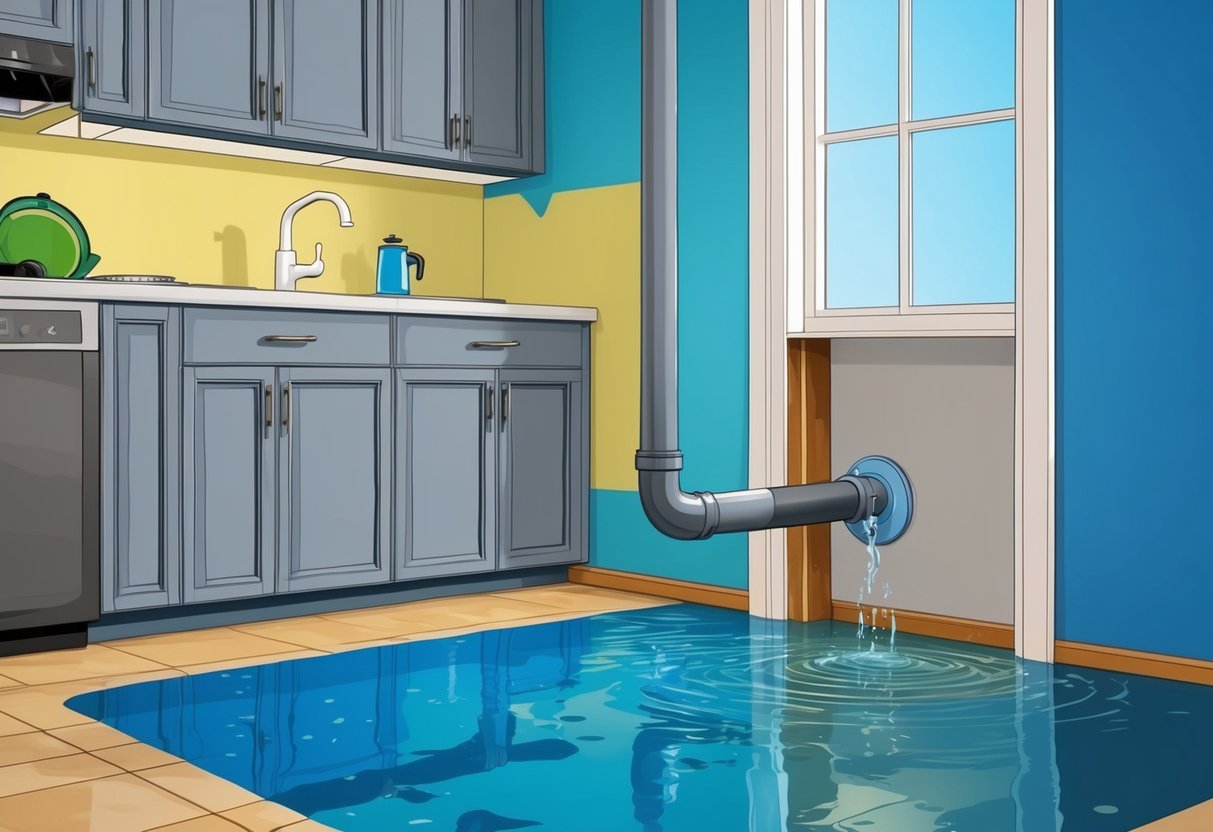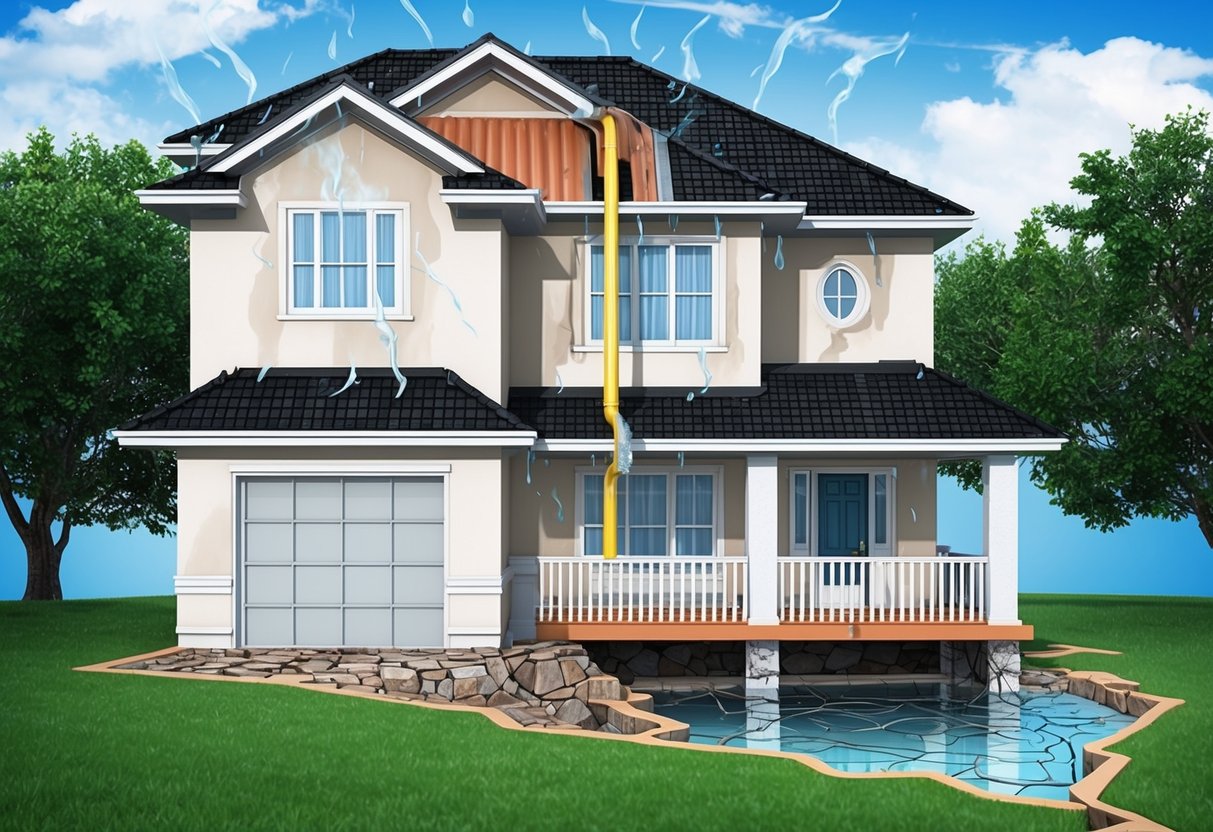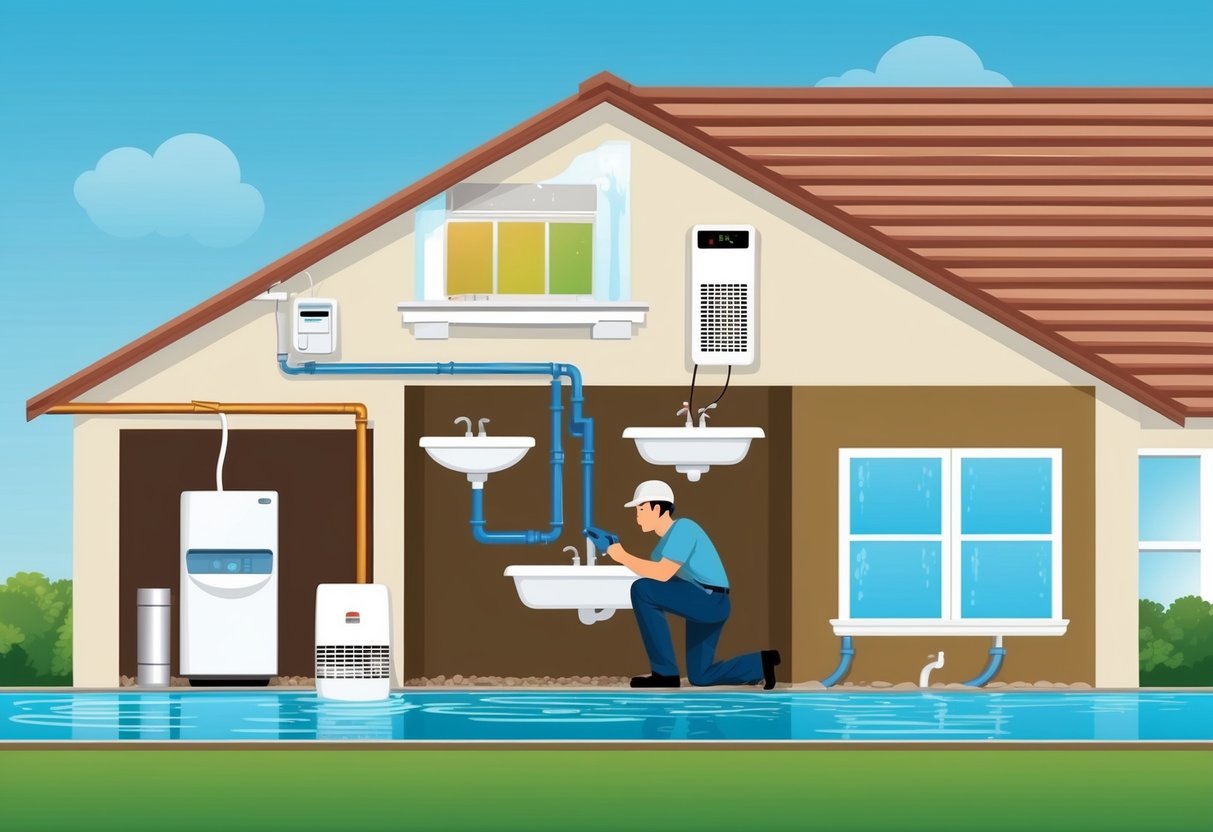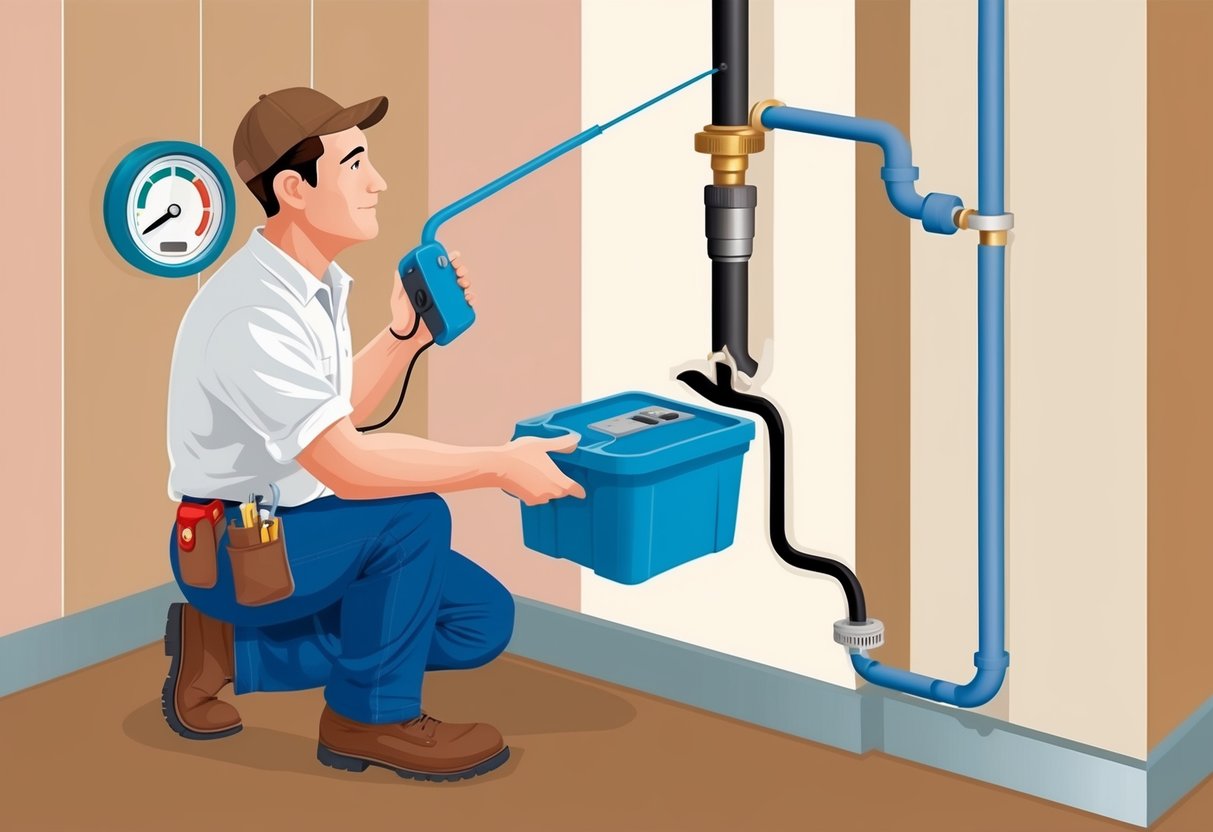
Managing Other Water Intrusion Points

Water infiltration doesn’t only come from plumbing leaks. Structures like windows, doors, and even small holes or gaps in exterior walls may become sources for unwanted moisture entering the home.
Checking Windows, Doors, and Skylights
Windows, exterior doors, and skylights are some of the most common entry points for water intrusion, especially during heavy rainfall or wind-driven storms. Homeowners should examine seals and weatherstripping for signs of wear, cracks, or visible gaps that might let water seep in.
Paying close attention to water stains, peeling paint, or warped wood near these fixtures can reveal slow leaks that might otherwise go unnoticed. Routine maintenance such as cleaning debris from window tracks, replacing worn gaskets, and inspecting caulk around frames plays a critical role in preventing leaks and hidden water damage.
For skylights, regularly check for fogging or water spots between panes and inspect the flashing to ensure it remains intact. Promptly addressing these small problems can reduce the risk of costly water damage or even mold growth.
Inspecting for Holes and Gaps
Small holes or gaps in siding, roofing, and foundation walls provide entry points for water infiltration. Common causes include damaged siding, missing roof shingles, unsealed utility penetrations, and deteriorated mortar joints.
Doing a thorough visual inspection of the home’s exterior every season helps in identifying these vulnerable spots early on. Critical steps include:
- Filling or sealing small cracks and gaps with exterior-rated caulk.
- Replacing missing or damaged siding and roofing materials.
- Installing proper flashing or backer rod for larger gaps.
For areas where pipes, cables, or HVAC lines enter the home, ensure all penetrations are tightly sealed, as these are frequent culprits of unseen leaks. Addressing these issues promptly can help homeowners prevent significant water leaks and protect interior finishes from long-term moisture damage.
Seasonal Home Maintenance Hacks

Seasonal changes can lead to hidden water leaks and increase the risk of structural damage to homes. Taking simple steps at the right times of year prevents costly repairs and preserves a property’s value.
Preparing for Wet Weather
Homes are most vulnerable to water leaks shortly before and during heavy rain. Checking visible pipes, especially in basements and crawl spaces, is a crucial starting point for leak detection.
Look for signs of moisture, rust, or corrosion around pipe joints and connections, both indoors and outside. Regular gutter cleaning prevents water overflow onto walls and foundations.
It is also recommended to check that downspouts are clear and direct water at least 6 feet away from the foundation. Sealing any visible cracks in siding, windows, or external walls also reduces the risk of rainfall getting inside.
A quick visual inspection under sinks and behind toilets can help spot small leaks early. Pay attention to musty odors, as these may indicate hidden leaks or moisture problems behind walls or cabinets.
Utilizing moisture meters for areas prone to dampness can be an effective proactive measure—detecting hidden wet spots before stains or mold appear. For more advanced tips, see how periodic inspections and checking for moisture work to prevent water damage at Lion Home Service.
Preventing Issues Caused by Slope and Drainage
Proper grading around the home keeps water from pooling near the foundation. The ground should slope away from the structure at least 6 inches over the first 10 feet.
This encourages rainwater to flow away instead of seeping into basements or crawl spaces. Downspouts are essential for channeling roof runoff.
Extensions should carry water well beyond the home’s perimeter. In areas where storms are frequent, installing French drains or surface drains can provide additional protection.
Regular inspection of drainage systems is advised, especially after major weather events. Remove debris from drains, check for blockages, and repair any damage promptly.
Maintaining these systems year-round supports overall home maintenance, helping to prevent both obvious and hidden water leaks before they develop into major problems. Learn more about drainage and slope adjustments for protection at This Old House.
When to Call a Professional for Leak Detection

Undetected water leaks can lead to structural damage, financial loss, and health issues if left unresolved. Professional help is sometimes necessary when situations extend beyond basic DIY techniques, especially to protect property investments and avoid escalation in complex scenarios.
Evaluating Complex Leak Scenarios
Some water leaks are straightforward to spot, like a dripping faucet or a visible pipe under the sink. Others, such as leaks behind walls or under concrete, are harder to detect and repair without special equipment or experience.
Signs of trouble include unexpected spikes in water bills, persistent water stains, unexplained mold growth, or musty odors. If residents notice water pooling in unusual areas, or if they hear constant hissing or dripping inside the walls, professional leak detection is highly recommended.
Professionals use tools like acoustic sensors, thermal imaging, and moisture meters to pinpoint leaks that are invisible to the naked eye. They help minimize damage by identifying the leak source quickly and performing necessary repairs, which can save substantial repair costs over time.
In cases where the source remains unidentified despite efforts, scheduling an inspection from a licensed detection expert is the safest choice. More information on recognizing hidden leaks and signs it’s time to call in professionals is available from this leak detection guide.
Real Estate Considerations and Inspections
For homeowners and buyers, regular inspections are essential, especially during property transactions. Water damage can significantly affect a property’s value and may lead to disputes or unexpected expenses after purchase.
Before finalizing a home sale or purchase, a thorough leak detection inspection helps identify any hidden issues that basic home inspections might miss. Features like irrigation systems, basements, and crawl spaces should be evaluated by specialists familiar with real estate water intrusion risks.
Real estate professionals and inspectors often recommend specialized leak detection services for properties with a history of water damage, frequent repairs, or during transitions between tenants. Scheduling professional inspections not only protects buyers and sellers but is increasingly recognized as a necessary step in protecting property investments, as stressed by home maintenance and real estate inspection experts.